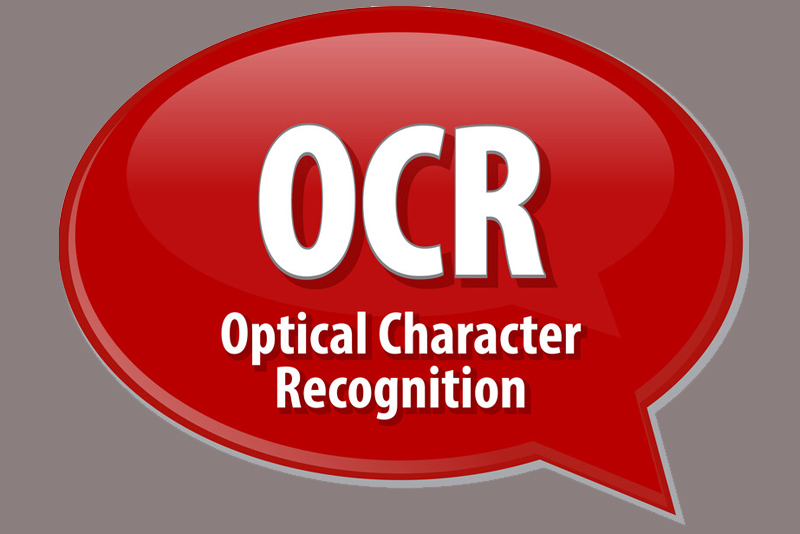Traditional data entry and extraction could be tedious and time-consuming and is prone to errors. As document processing is an essential part of business operations, organizations are striving to discover new ways to automate data entry. However, one popular method is OCR or Optical Character Recognition, which is a technology that can extract all the text from the images, PDF documents or scanned files. A scanned file is usually stored as an image if not converted into a text-searchable file with the help of OCR technology. Once that is done, the document allows the search engine to perform content search inside the file and retrieve appropriate results. Professional outsourcing companies provide efficient data entry services for OCR solutions and OCR cleanup to help improve the quality of the document conversion process. However, the old-fashioned OCR technology wasn’t fully automated and couldn’t operate properly with manual supervision. The proper functioning required strict rules and templates. Therefore, artificial intelligence (AI) is being incorporated into OCR to come up with a flexible and reliable automated process.
Back in the 1990s, OCR was already widely used as it was instrumental in helping business owners automate the process of managing physical documents. With OCR, enterprises have begun to use software to scan documents like invoices and create digital copies. Even though the quality of OCR has progressively enhanced ever since it was created, the demands of modern enterprises have fast outstripped its growth. The old-school OCR technology works well with documents, the formats and templates of which were pre-loaded into the system, even if it comes with a significant problem of flexibility. That is, for every type of document a new template model has to be designed and loaded into the system, which is a time-consuming and costly process similar to manual data population. All this has made many companies turn to AI-driven alternatives to boost their efficiency and extract meaning as AI-powered OCR systems require no manual interference.
According to the Merriam-Webster dictionary, AI is “a branch of computer science dealing with the simulation of intelligent behavior in computers” with “the capability of a machine to imitate intelligent human behavior”. AI can be used in almost every aspect of our daily lives, from chat bots, to Siri, Netflix, and even the cars we drive (Tesla). Powering this technology with OCR systems bolsters traditional OCR systems, by improving data recognition and classification. It provides companies the ability to fully harness the data they collect and adapt to changing conditions in fast-changing industries. An A.I-powered OCR system adapts and customizes its processes to fit naturally within your business.
The working mechanism of such systems is based on three major stages (shuftipro.com). They are:
- Pre-Processing: Using different techniques the images are preprocessed for successful character recognition. The techniques include:
- De-skew and Despeckle: To accurately extract information or data from any document, it has to be aligned properly without any spots or crumpled/folded edges. For that two processes are done. The first one is Deskewing, also called auto straighten, which is the automatic rotation of an image so that the text is vertically aligned. It is also the process of removing skew – an artefact that can occur in scans because of the camera being misaligned, imperfections in the scanning or surface, or simply because the paper was not placed completely flat when scanned – from images. The second process is Despeckle which corrects the binarization effects or scanning interference. This filter removes noise from images without blurring edges. It also attempts to detect complex areas and leave these intact while smoothing areas where noise is noticeable.
- Binarization: Used as a preliminary step before OCR, this technique converts the colored image to binary image, i.e. grey-scale (black and white). It is necessary as most OCR algorithms work on binary images for the sake of simplicity. It also influences the recognition quality to a significant extent for making careful decisions on the provided input.
- Line removal: Cleans up non-glyph boxes and lines.
- Layout Analysis: Identifies columns, paragraphs, captions, and so on as blocks, particularly in the case of tables or multicolumn layouts. It enables OCR technology to identify text and data written in the form of columns so that the data extraction is thorough and no text is left un-scanned.
- Script Recognition: It helps in enhancing the data extraction as the appropriate OCR parameters can be invoked for the specific script. That is, in multilingual documents, the scripts may change at the level of words, which makes the identification of scripts necessary before the character recognition process.
- Character Isolation or segmentation: For OCR characters, various characters linked by image artifacts should be divided, single characters broken into several artifact-based pieces should be linked.
- Character Recognition: This stage works in two ways.
- In the first method, feature extraction, the algorithm for feature detection defines a character by evaluating its lines and strokes. That is, instead of identifying the character as a whole, feature extraction identifies the individual components of a particular character by decomposing it into “features” e.g. lines, line intersections, closed loops, line directions, etc.
- In the second method, pattern recognition works by identifying the entire character. That is , working on the “Matrix Matching” algorithm, which compares the image to a stored glyph, pixel-by-pixel, this method relies on the correct isolation of the input glyph stored accurately as per a similar font and scale. This technique works flawlessly for the typewritten document in the same font.
- Automated Form Population or Automated Data Entry Process: This stage comes right after the first two stages, where the stored data in the memory from ‘Pre-processing’ and ‘Recognition’ steps, is populated in the essential fields of the verification form; saving the time of end-user.However, to increase the OCR accuracy for the document, the output is constrained to some post-processing techniques.
- One is, relying on OCR libraries such as The Tesseract Library, which is available online for free. Using its dictionary, you can control the segmentation of characters.
- For error correction and to identify certain words that should be written together, the “near neighbor analysis” can be used. It uses frequencies for co-occurrence to correct mistakes, by noting that some words have been seen together. For example, “Washington, D.C.” is more prevalent in English than “Washington DOC.”
- Grammar can also help determine the language being scanned, for instance, whether a word is likely to be a verb or noun, provides higher accuracy.
In OCR post-processing, the Levenshtein Distance algorithm is often used to further maximize OCR API outcomes.
However, according to Information Age, ” as OCR tools are undergoing a quiet revolution, ambitious software providers combine OCR with AI. As a result, data capturing software is simultaneously capturing information and comprehending the content, that is, AI tools can check for mistakes independent of a human-user providing streamlined fault management. Combining AI and OCR together is proving to be a winning strategy for both data capture and management. While AI-based OCR tools may not be as glamorous as other transformative technologies they will inevitably have a substantial impact on the bottom line of companies that embrace them. They have the potential to help to countless organizations to automate the processing and error-checking of physical documents.
By leveraging emerging technologies such as AI-powered data entry automation, businesses can save time, money and assign their staff to perform processes that require human intellect and empathy. Always keep in mind that technologies that cut costs and increase efficiency are always in high demand and moreover, reducing administrative is key to making employees more productive. Partnering with a reliable data entry outsourcing company is the best way to ease the documentation burden and improve efficiency.




